How to Find Your Creative Flow: Tools, Tactics, and Insights
So how’s that novel coming? Your new song? What about that program you were going to write? Or the website you wanted to build? If your creative project, no matter what it is, isn’t coming along as smoothly or as quickly as you’d hoped, you’re not alone. After a lot of soul-searching, research, and banging my head against the wall, I’ve learned a lot about creative flow, and I’d like to share these tools, tactics, and insights with you.
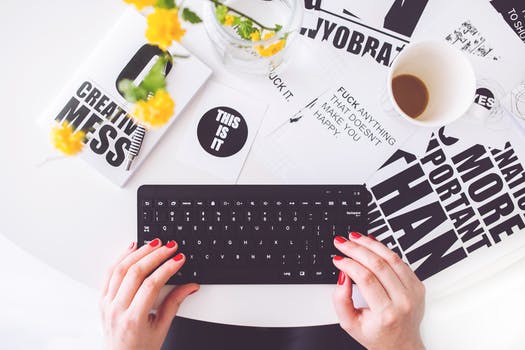 But back to where we started… It’s not that you didn’t try. You sat down with good intentions, ready to create. Thoughts and ideas were running through your mind all day, occupying your every thought. You couldn’t wait to sit down and finally get started and express your creative energy. You gathered up your supplies, opened up your document, and then… Nothing.
But back to where we started… It’s not that you didn’t try. You sat down with good intentions, ready to create. Thoughts and ideas were running through your mind all day, occupying your every thought. You couldn’t wait to sit down and finally get started and express your creative energy. You gathered up your supplies, opened up your document, and then… Nothing.
You watched the cursor blink, taunting you with every flash, and the page remained as blank as your mind. All your creative energy, your ideas, your enthusiasm seemed to vanish. You couldn’t translate them onto the page. Or, suddenly they didn’t seem good enough. Maybe you didn’t know where to start. Or perhaps you typed a few sentences only to immediately delete them because they didn’t feel right.
You’re haunted by the desire to create but daunted by the task. I get it. I’ve been there.
I spent a summer in college working as a lifeguard at a waterpark and dreaming about music. I’d sit up in my chair and watch the people play, feeling the sunshine, the coolness of the water, and the freedom of the day. In that environment, the ideas for tunes, melodies, and lyrics were abundant. Good feelings and creative vibes flowed like, well, waterslides—my expectations and confidence were high. But when I arrived home at the end of the day and sat down with my guitar, I could rarely bring myself to play, let alone hit “record.” Nothing was good enough… I couldn’t recapture any of the creative energy I’d felt so strongly just hours earlier.
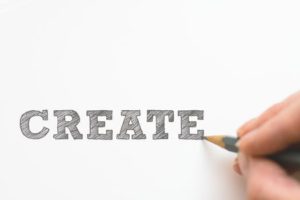 This pattern would repeat itself again and again in different manifestations of my creative work over the years: in music, writing, speaking, and design work. I grew increasingly frustrated and desperate. And the longer the cycle continued, the more my enthusiasm gave way to self-doubt. Bridging that gap and finding a way to get back to creative flow on demand has been an important part of my life’s work. After a tremendous amount of soul-searching and way too much reading…
This pattern would repeat itself again and again in different manifestations of my creative work over the years: in music, writing, speaking, and design work. I grew increasingly frustrated and desperate. And the longer the cycle continued, the more my enthusiasm gave way to self-doubt. Bridging that gap and finding a way to get back to creative flow on demand has been an important part of my life’s work. After a tremendous amount of soul-searching and way too much reading…
I traced the root of the problem to one thing: Fear.
I’ve managed a lot of creative work in the past few years, and even had moderate commercial success and numerous glowing reviews. So I conquered my fear, right? Nope. Sure, I’ve developed some helpful strategies, but I don’t think fear ever goes away entirely. Creative work takes a great deal of courage, and we have to keep showing up, day after day.
Fear shows up in countless ways:
- We fear our work isn’t good enough.
- We fear our ideas aren’t good enough.
- We fear our skills are lacking.
- We fear we don’t have what it takes.
- We fear we can’t express ourselves the way we’d like to.
- We fear that maybe our message and our truth aren’t worth expressing.
- We fear that even if we do, people won’t like what we have to say.
- We fear our art will never be good enough for them.
- We fear the world will judge us—our characters, our dreams, our very selves—as unworthy.
Maybe I’m the only one who wrestles with these demons every time I sit down at the keyboard, but somehow I don’t think so. Doing creative work requires us to change our relationship to fear. Fear is a challenge, but it’s not an enemy. Our fear is a tool for growth. It’s fascinating to me that the word “courage” shares the same root as the Latin, French, and Spanish words for “heart.” We need that strength of heart to face the blank page and everything it represents.
 The last five years of my life have been dramatically different than the decade that preceded them. A single, critical shift, repeated over time, has made all the difference: Leaning into the fear. See, fear can be a sign that you’re on the right track. The work that scares us most is the work that will help us grow. We’re only afraid because we care about the work we’re doing. When you’re afraid, you’re inching closer to your authentic self.
The last five years of my life have been dramatically different than the decade that preceded them. A single, critical shift, repeated over time, has made all the difference: Leaning into the fear. See, fear can be a sign that you’re on the right track. The work that scares us most is the work that will help us grow. We’re only afraid because we care about the work we’re doing. When you’re afraid, you’re inching closer to your authentic self.
If you’re interested in this, I highly recommend The War of Art by Steven Pressfield. The book is worth its weight in gold, and it has been a valuable asset in my journey to conquer the “resistance” within me and get on with my “work.” In the meantime, though, here are a few other ideas that you can play with to help you get started. These are things to keep in mind, tactics I use in my own work when “resistance” shows up.
Tactics to enter a state of creative flow: Start with Stealing Flow
I’ve recently released an audio brainwave entrainment suite, Stealing Flow, to help with all parts of the creative work process. It’s been incredibly helpful in bringing my creativity to life, as the act of creation requires us to be in specific brainwave patterns to access the depths of our inner resources and unleash the creative wellspring onto our canvas—whatever shape that canvas may take. The practices and ideas you’re about to read will be profoundly assisted if you do them while listening to the Stealing Flow suite, so, if you’re interested, I recommend you check it out.
Keep in mind, though, that even a powerful tool like Stealing Flow can’t do your work for you (even though it certainly feels like it sometimes); you have to meet it halfway. You have to “show up” with courage. Let’s get started, shall we?
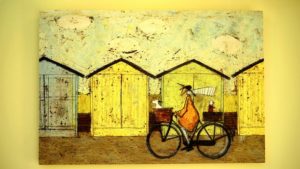 Cycles of Creative Flow
Cycles of Creative Flow
Creative flow states don’t happen in a vacuum; they’re part of a larger cycle:
Struggle > Release > Flow > Recovery
Practice 1: Spin Your Wheels
In practical terms, this means that the beginning is almost always a struggle—sometimes this means day to day, sometimes project to project, and sometimes at a macroscopic “lifelong” level. So when you sit down at your computer, especially at the beginning of a new project, you’ll be doing some potentially stressful cognitive processing: sorting through your ideas, thinking about what you want to put on your screen, maybe feeling like it’s not quite right. You’re planning, thinking, rejecting, spinning your wheels… and that’s okay. That’s part of this process. You need this “wheel spinning” phase to kick your subconscious into gear.
You may start to feel frustrated here, but don’t give up. Stay with it for awhile. You might listen to Stealing Flow’s “High Focus” track when you’re doing this work, as that’s the part of the mind you’re engaging here. (You can also use “Warm-Up” immediately prior to beginning your work; it helps your brain mimic the transition from recovery to struggle to release so you’re ready to enter flow.)
After you’ve spent a sufficient amount of time in that struggle phase, you’ll need to release. What that means, basically, is that you stop struggling. You can lie down for a bit and listen to “Release, Relax, Recharge,” you can get outside for a walk, you can take a shower… The point is to completely disengage from thinking about your project. Just let your mind go somewhere else; disconnect. Your non-conscious processing is taking care of it.
Next, you’ll come back to your computer again, and now you’ll be ready to flow. This is where you’ll use “Stealing Flow I” or “Stealing Flow II.” Just sit down and get to work.
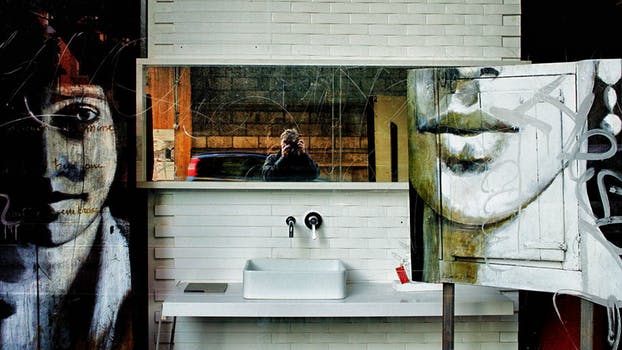
Practice 2: Be an “Imperfectionist”
I realize that “just sit down and get to work” sounds dismissively easy. Here’s the key: Be an “imperfectionist” (a term borrowed from Stephen Guise, who wrote an excellent book with the same title). When you begin your creative work, don’t overthink it. Just start. Don’t worry about whether it’s good enough, beautiful enough, expressed well enough. Don’t think too hard about your shapes, lines, forms—just let it roll.
Think of it as practice. You don’t have to “keep” anything you’re doing here, but don’t self-edit in the middle of this either, just let go and let flow. The “imperfectionist” trick may feel strange at first. It takes some getting used to. But the critical brain and the creative brain engage two different systems that don’t play nicely together. Engage the creative mind by continuing to work. Outrun the critical mind; it can do its job later, when you’re editing.
Care less about the outcome. Care more about moving forward.
Imperfect is fine. Trust your instincts. Fix it later. Or don’t—you might surprise yourself. When you allow yourself to just let go and trust your creative brain, you’ll free yourself up to do some of your best work.
Practice 3: Refill the Tank
After you’ve had your time in flow, it’s important to step away from your project and “refill the tank.” Even if you’re on fire and eager to continue, a brief period of rest will allow you to continue working without burning out. It’s important to make sure that you’re engaging in activities that are truly restful. Thus, surfing the internet, checking social media, and doing other stimulating tasks that engage the dopamine reward system aren’t truly rejuvenating. To truly rest and recover, we need to disengage.
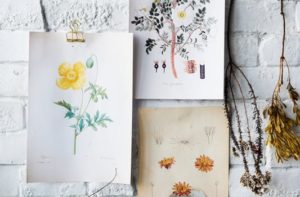 Get plenty of sleep, do some meditation, eat good food, read a book. Have a nap. Take a walk outdoors. Take a bath or a shower. Pet your cat. When you’re really in the groove with a project, it might be tempting to skip this step, but it’s incredibly important if you want to avoid burnout and have a sustainable creative practice.
Get plenty of sleep, do some meditation, eat good food, read a book. Have a nap. Take a walk outdoors. Take a bath or a shower. Pet your cat. When you’re really in the groove with a project, it might be tempting to skip this step, but it’s incredibly important if you want to avoid burnout and have a sustainable creative practice.
By remembering the cycle of flow (confronting the struggle phase with courage, being an imperfectionist, and refilling the tank), you’ll set the stage for powerful breakthroughs in your creative work. Yes, it can be scary. Yes, it can be a challenge. Anything worth doing is. Lean into your fear, then outrun it. You’ll find yourself in creative flow in no time.
_________________________________________________
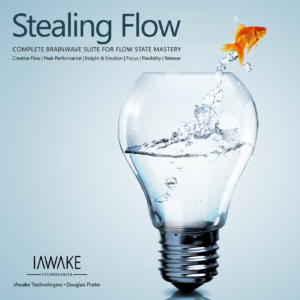 Check out Stealing Flow — you won’t regret it.
Check out Stealing Flow — you won’t regret it.
_________________________________________________

Doug Prater is the developer of iAwake Technologies’ Stealing Flow suite—an outstanding peak performance and flow-enhancing set of tracks. He is also an author, meditator, fitness enthusiast, and musician who holds a degree in Music: Sound Recording Technology from Texas State University. Born and raised in Littleton, Colorado, Doug also spent significant periods of his life in Austin, TX, and Atlanta, GA. Always longing to return to the mountains, he now lives in the Smokey Mountains of western North Carolina.
_________________________________________________
 Blog Editor: Heidi Mitchell
Blog Editor: Heidi Mitchell
Leave your comments below
2 Comments
Leave a Comment
You must be logged in to post a comment.

[…] Alpha brain waves can be found in that mysterious space between our conscious and subconscious minds—it is present during deep relaxation and light meditation. This brain wave state increases your imagination, learning, visualization, and memory. […]
[…] Alpha mind waves could be present in that mysterious area between our aware and unconscious minds—it’s current throughout deep leisure and light-weight meditation. This mind wave state will increase your imagination, learning, visualization, and memory. […]